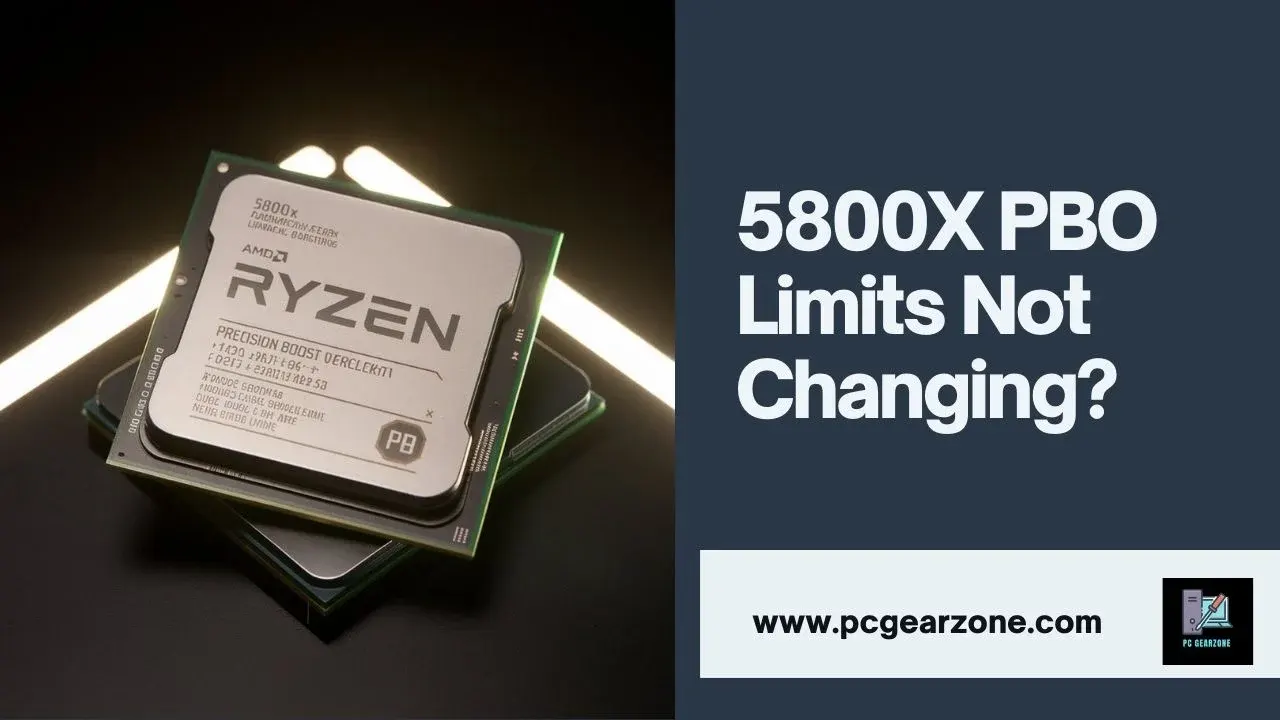5800X PBO Settings
In regards to PBO settings for Ryzen 7 5800X, there are numerous examples from users and forums and communities like(reddit and Toms Hardware) where people shared their experience and the settings they used for the better performance, temperature and noise.

Here’s a comprehensive guide based on these discussions:
1. PBO Limits Configuration (PPT, TDC, EDC)
PPT (Package Power Tracking): Set to 120W – 200W. This regulates the amount of power that the CPU can draw at any one time. A standard setting is 140W, but it is possible to overclock to 200W, if the cooling is adequate.
TDC (Thermal Design Current): Set to 80A – 140A. This is the maximum current that is permissible for such a load to be continuously supplied. Users’ opinion varies, but the most common suggestion is to use 100A as a starting point to achieve the best results.
EDC (Electrical Design Current): Set to 120A – 180A. This is the peak current for short burst. A setting of 150A is relatively safe middle ground between stability and performance.
These values enable the CPU to overclock appropriately but at the same time minimizing heat production. People mentioned that using higher EDC (like 180A) can give better performance at the cost of heat so make sure your cooling is ready for this.
2. Boost Clock Override
Boost Clock Override should be set to 200MHz. It also allows the CPU to operate at a frequency over the base boost clocks where there is Thermal and Power Headroom. This configuration is normally used together with a negative curve optimizer to improve efficiency.
3. Curve Optimizer Settings
All-core negative offset: All the users suggest that a -20 to -30 curve optimizer offset for all the cores should be used. This assists in controlling voltage and temperatures while at the same time increasing performance.
-25 to -30: It is effective for most 5800X chips, reduces temperatures and power consumption while maintaining stability.
Per-core tuning: Some users propose to add certain values to each core separately (-30 to the best cores and -15 to the worst ones). But it needs to be tried harder and tested for stability more than this.
4. Temperature and Fan Curve Changes
Temp limit should be set at 85 degrees. This is a good upper limit for the 5800X so it won’t throttle too much under heavy loads.
SomeUsers recommend making the fan curve to increase steeply at the 80°C mark to help deal with temperatures when performing high intense tasks.
5. Eco Mode and Power-saving Modes
If noise and heat emission are not your friend, you can activate the Eco Mode at the power of 65W. This setting lowers power usage and temperatures considerably, for high rendering time or less heavy work loads. But, you may lose a little in multi-core efficiency as well, depending on the model of your computer.
6. Stability Testing
After setting these values apply stress tests and use Cinebench R23 or Linpack Xtreme to check for stability.
Check for errors in your system from the Windows Hardware Error Architecture (WHEA). If you get errors, set curve optimizer per core and increase the negative offset in steps of 5 (for example, –15 instead of -25).
User Experiences
Most of the users discovered that these configurations lower the operating temperatures of the 5800X by up to 10-15°C, and at the same time, improve performance.
PPT/TDC/EDC is set at 200/140/180, curve optimizer is set at -25 all cores, and boost override is set at +200Mhz.
Only cooler solutions such as Noctua NH-D15, or Thermalright Frozen Edge 360 are capable of handling higher PBO settings.
